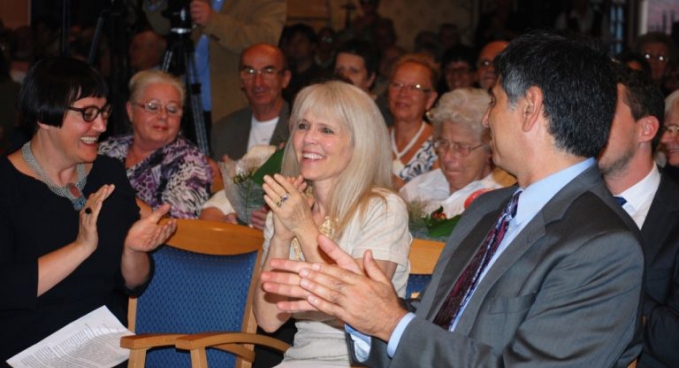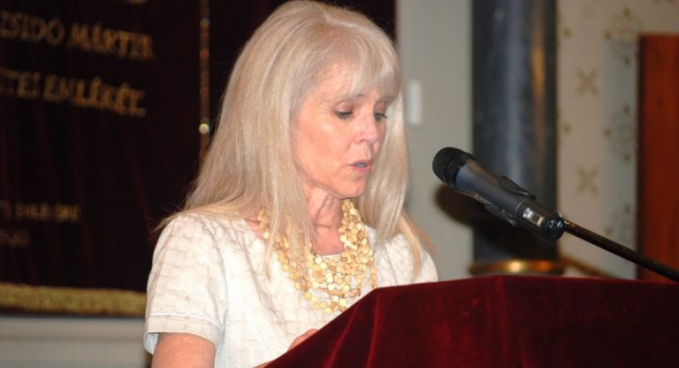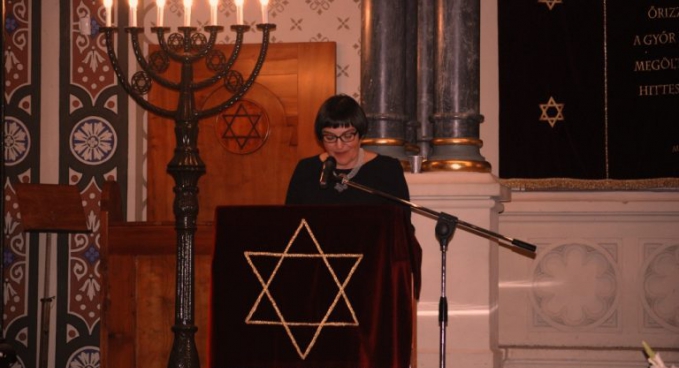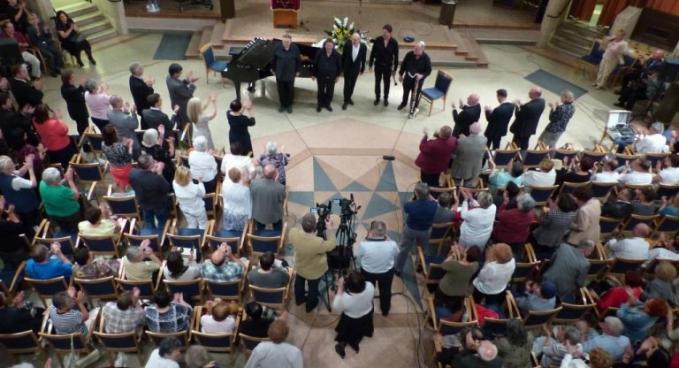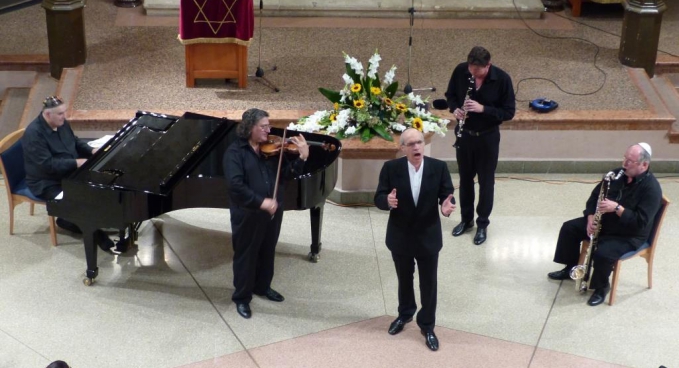Holocaust Memorial Concert in Győr
On the evening of 17 September, the old synagogue in Győr (now part of the Széchenyi István University) slowly fills up with people gathered for the memorial concert titled Hungarian Holocaust 70.
The sheer size of this beautiful building testifies that once a prosperous and prominent Jewish community lived in Győr. The first families settled here in 1791 (according to Sándor Lónyai) and the community grew and thrived. However, after a series of anti-Jewish regulations, as M. André Goodfriend, Chargé d’Affairs of the Embassy of the United States related, between 1942 and 1944 the majority of male Jews were sent to labour camps. On June 11th, 1944, the remaining members of the community (around 3000 elderly people, women and children) were deported to Auschwitz. After the war, only 700 survivors returned.
Annette Lantos Tillemann-Dick, the daughter of Tom Lantos, told the story of her mother, who due to the „numerus clausus” laws which restricted the number of Jews taking part in regular education attended a school run by Scottish Presbyterians. In the spring of 1944 the Nazis occupied the country and the 12 year-old girl told her mother that they had to leave immediately, which helped them survive. However, there were still many young Jewish students at this Scottish school when the SS came to take them away. Their teacher refused to allow the Nazis to round up her pupils, so she went with them to the cattle cars that transported them all, including this courageous, loving teacher, to Auschwitz and the gas chambers where they all died together.
These stories are so tragic they are painful to recall, said Annette Lantos Tillemann-Dick. It is understandable that many would prefer to push them under a rug. However, those who fail to understand history are doomed to repeat it. And as Anna-Mária Bíró, director of the Tom Lantos Institute emphasised it is also important to remember and acknowledge that the Hungarian society passively or actively contributed to this tragedy by collaborating in the deportations. The basis of shaping the present responsibly is openly facing the past. The Hungarian state and society takes this responsibility, so that we can make our past fatal decisions unrepeatable, said Anna-Mária Bíró.
The music started by a psalm sung by precantor László Fekete with the other musicians entering the stage one by one: Csaba Klenyán (clarinet), Lajos Kathy Horváth (violin), Antal Babits (bass clarinet), and Béla Szakcsi Lakatos (piano).
As M. André Goodfriend encouraged the audience, while listening to the music we could reflect on the stories told and untold, written and not of those Jewish and Roma lives that perished in the catastrophe known as Shoah in Hebrew, or Porrajmos in the Romani language.
The concert ended with the well-known Hungarian Jewish folk song, “Szól a kakas már”, which was received with a standing ovation.
We would like to express our gratitude to the Új Dimenzió Műhely Band for a wonderful concert and to the Embassy of the United States of America for sponsoring this event.
